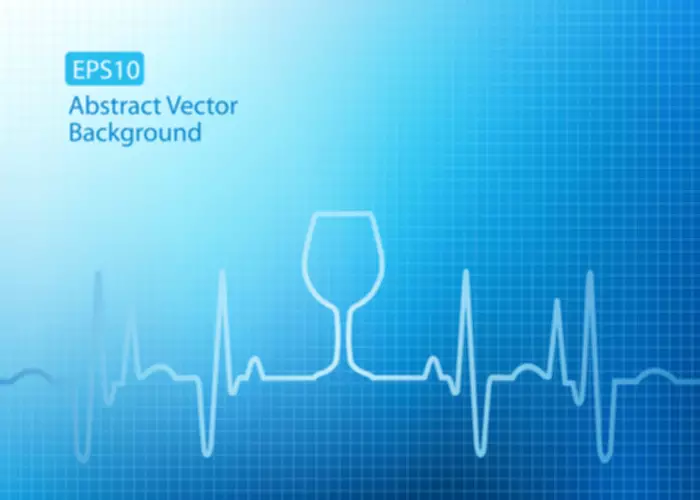
The Recovery Village aims to improve the quality of life for people struggling with substance use or mental health disorder with fact-based content about the nature of behavioral health conditions, treatment options and their related outcomes. We publish material that is researched, cited, edited and reviewed by licensed medical professionals. The information we provide is not intended to be a substitute for professional medical advice, diagnosis or treatment.
Social Media Use Drives Vaping and Mental Health Issues in Adolescents, Study Finds
- Once a person becomes intent on finding drugs, the prefrontal cortex activates the brain’s ‘go system.’ This triggers a person to have a strong urge to seek out drugs.
- The scope of the review was expanded based on findings from the review of key papers and reports.
- This results in a combination of brain-centered compulsion and physical need for the addicting substances in the body.
- Given the scale of the overdose epidemic, the impact of these medications is “nothing short of remarkable,” said Zachary Sartor, a family medicine doctor in Waco, Texas, who specializes in addiction treatment.
- These differences may contribute to the blunted ethanol-induced behavioral sensitization observed in adolescent mice.
There is sometimes a perception that addiction is something that either exists in a person’s character or does not. This idea can lead to a belief that a person who is struggling with addiction to a substance may have had one drink or tried an illicit drug one time and immediately became addicted. Sometimes it is only after several relapses that a person discovers what cycle of addiction recovery from an addiction means for them. These stages can be represented as a cycle, and in theory, people should go through these stages in sequence. In reality, people can jump about between stages, go backward and forward, and even be in more than one stage at a time. The successes achievable through professional treatment and care cannot be overemphasized.

Why Should We Be Concerned About AUD and Alcohol Addiction?
Compulsivity also drives the challenges individuals face in the addiction cycle when they attempt to decrease or abstain from substance use. However, various treatment options are available to help people on the path to recovery from substance use disorders. It’s a complex, chronic brain disorder characterized by compulsive drug seeking and use, despite harmful consequences. The Three Stages of Addiction form a cyclical pattern that can be incredibly difficult to break free from. Understanding this cycle is crucial for those struggling with addiction, their loved ones, and healthcare professionals working to combat this pervasive issue. As with the medications and therapies used to treat asthma and diabetes, the treatments in addiction rehab are designed to help the person learn to manage a chronic substance use disorder and reduce the likelihood of relapse to drug use.

The Addiction Cycle: What Are The Stages of Addiction?
It triggers people to seek out drugs regularly in an attempt to achieve the same feeling. Perhaps one of the most insidious effects of addiction is the way it derails life plans and stunts personal growth. Dreams and ambitions are put on hold or abandoned entirely as the addiction takes center stage. The loss of potential – what could have been if not for the addiction – is a tragedy that’s hard to quantify but deeply felt by those in recovery. This crisis point might come in the form of a health scare, legal troubles, or the loss of a job or relationship.
Neurobiological mechanisms of the preoccupation/anticipation stage
This dependence signifies that the body or brain has adapted to the presence of the drug, requiring increasing amounts to achieve the same effects, a phenomenon known as tolerance. The Centers for Disease Control and Prevention (CDC) reported that there were over 70,000 drug overdose deaths in 2019, highlighting the severe consequences of escalating drug use (CDC, 2020). Research indicates that stress, trauma, and mental health disorders are deeply intertwined with the development and perpetuation of addictive behaviors.
Conceptual framework, definitions, and animal models
Alcohol is a powerful reinforcer in adolescents because the brain’s reward system is fully developed while the executive function system is not, and because there is a powerful social aspect to adolescent drinking. Specifically, prefrontal regions involved in executive functions and their connections to other brain regions are not fully developed in adolescents, which may make it harder for them to regulate https://ecosoberhouse.com/ the motivation to drink. Because the brain is adaptable and learns quickly during adolescence, and because alcohol is such a strong reinforcer for adolescents, alcohol use is more likely to be repeated, become a habit, and eventually evolve into a problematic drinking pattern that may lead to AUD. A growing body of substance use research conducted with humans is complementing the work in animals.
Health Reporting in the States
The “stages of change” or “transtheoretical” model is a way of describing the process by which people overcome addiction. The stages of change can be applied to a range of other behaviors that people want to change, but have difficulty doing so, but it is most well-recognized for its success in treating people with addictions. Addiction Resource is an educational platform for sharing and disseminating information about addiction and substance abuse recovery centers. Addiction Resource is not a healthcare provider, nor does it claim to offer sound medical advice to anyone. Addiction Resource does not favor or support any specific recovery center, nor do we claim to ensure the quality, validity, or effectiveness of any particular treatment center. No one should assume the information provided on Addiction Resource as authoritative and should always defer to the advice and care provided by a medical doctor.

